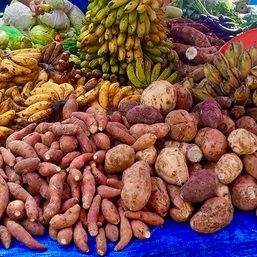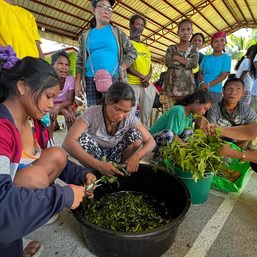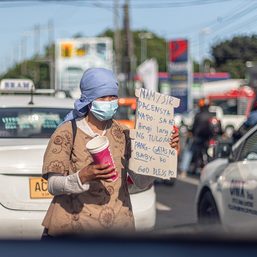SUMMARY
This is AI generated summarization, which may have errors. For context, always refer to the full article.

MANILA, Philippines – Filipino families experiencing involuntary hunger slightly dropped from 10.4% in June to 9.8% in September, a new Social Weather Stations (SWS) survey found.
The Third Quarter 2023 Social Weather Survey, conducted from September 28 to October 1, found that almost 1 in 10 families experienced involuntary hunger – being hungry and not having anything to eat – at least once in the past three months.
More Filipino families in Metro Manila felt hunger during the survey period compared to the last, with hunger at 17.3% compared to 15.7% in June. Balance Luzon, or Luzon outside the capital region, the Visayas, and Mindanao felt less or virtually the same levels of hunger.
Balance Luzon’s families who experienced hunger was at 10.3% compared to 11.3%, while both the Visayas and Mindanao had hunger levels of 6.7%, compared to Visayas’ previous 9.3% and Mindanao’s 6.3%.
The survey was conducted among 1,200 adults nationwide – 300 each in Metro Manila, Balance Luzon, the Visayas, and Mindanao. The sampling error margins are ±2.8% for national percentages, and ±5.7% each for Metro Manila, Balance Luzon, the Visayas, and Mindanao.
Same moderate hunger, less severe hunger
Filipino families who experienced moderate hunger, or those who experienced hunger “only once” or “a few times” in the last three months, hardly moved from 8.3% in June to 8.4% in September.
Those who experienced severe hunger, hunger that was felt “often” or “always,” dropped from 2.1% to 1.3%.

In Metro Manila, moderate hunger rose from 12% to 13.3%, while severe hunger hardly changed but still rose from 3.7% to 4%.
Moderate hunger in Balance Luzon rose by 0.7 points from 8.3% to 9%, while severe hunger fell by more than half from 3% to 1.3%.
In the Visayas, less families felt moderate hunger, with the figure dropping from 8.3% to 5.7%. Those experiencing severe hunger stayed the same at 1%.
In Mindanao, moderate hunger rose from 6% to 6.7%, while severe hunger was virtually eliminated in the three-month period from 0.3% to 0%.
Less hunger among the self-rated poor
In the September survey, 48% of Filipino families said they felt poor – up from 45% in June. Around 27% felt borderline poor, while 25% said they did not feel poor.
Overall hunger, which accounts for both moderate and severe hunger, fell among the self-rated poor, from 10.8% in June to 7.7% in September.
Based on the type of food their families eat, 34% of Filipino families rated themselves as food-poor, 35% rated themselves food-borderline poor, and 31% rated themselves not food-poor.
Overall hunger fell among the self-rated food-poor, from 9.4% to 7%.
On October 13, after the survey period, President Ferdinand Marcos Jr. established the food stamp program as one of his priority projects. This program is designed to alleviate hunger in the country’s poorest households.
Food inflation dropped from 7.1% in October from 10% in September, according to the Philippine Statistics Authority. – Rappler.com
Add a comment
How does this make you feel?



![[OPINION] Hungry children do not make good students](https://www.rappler.com/tachyon/2024/01/imho-PH-PISA-scores-jan-27-2024.jpg?resize=257%2C257&crop=260px%2C0px%2C720px%2C720px)






There are no comments yet. Add your comment to start the conversation.